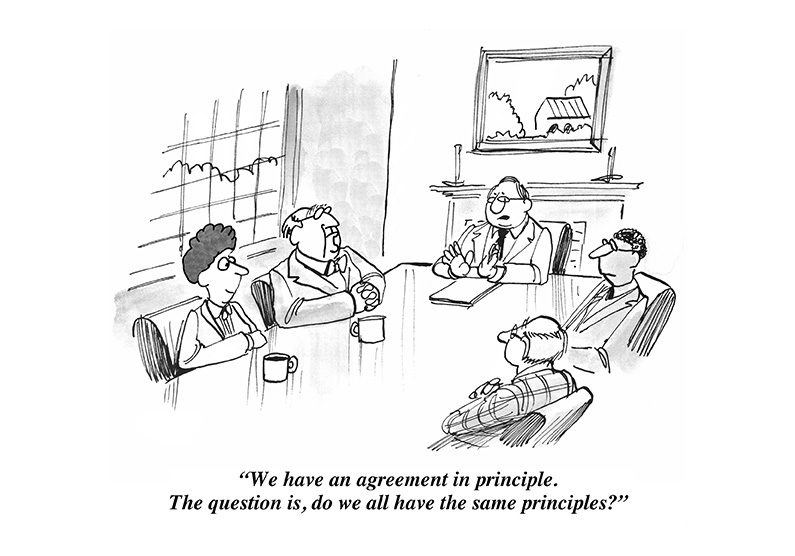posts By Alex Moskov
The secret to effective negotiation is simple: agree on the right price. Easy, right?
By
Alex Moskov
March 10, 2021
When tension increases, our automatic reflex tends to be to talk more and listen less. Tension makes us uneasy, and when we feel uneasy, we lose sight of the long view and get defensive.
By
Alex Moskov
December 3, 2020
In order to be successful in business, it is important to establish healthy relationships with players in and around your industry. When negotiating deals, this can prove to be difficult if you aren’t using effective negotiation behaviors.
By
Alex Moskov
September 30, 2020
Whether you’re heading into a negotiation, preparing for an important conversation, or tackling a creative endeavor, you’re going to need to utilize a Framing skill to be able to execute effectively.
By
Alex Moskov
September 10, 2020
One of the most important principles of sales negotiation is to satisfy needs over wants, and negotiables serve as one of the primary levers to do so.
By
Alex Moskov
August 25, 2020
What comes to your mind when you hear the word “contention”?
By
Alex Moskov
June 24, 2020
Every negotiation is going to involve one or more concessions. However, there’s more to conceding than simply giving the other party what they want. It’s not just what you concede, it’s also the way in which you concede that can make or break your negotiation. What you need is a set of concession guidelines.
By
Alex Moskov
February 24, 2020
The most important aspect of negotiation is often not about the product or service, but about the sales process itself. This is why you must develop a new skill: Positioning the Sales Process.
By
Alex Moskov
January 10, 2020
If you’re wondering, “How do I improve my negotiation skills?”; this article will introduce the six principles of negotiation and outline the negotiation skills experts use to maximize the value of agreements.










